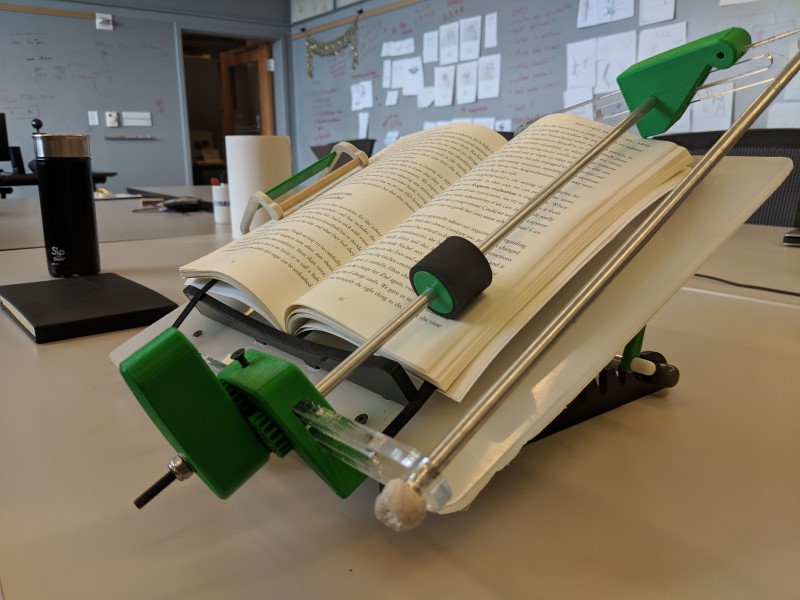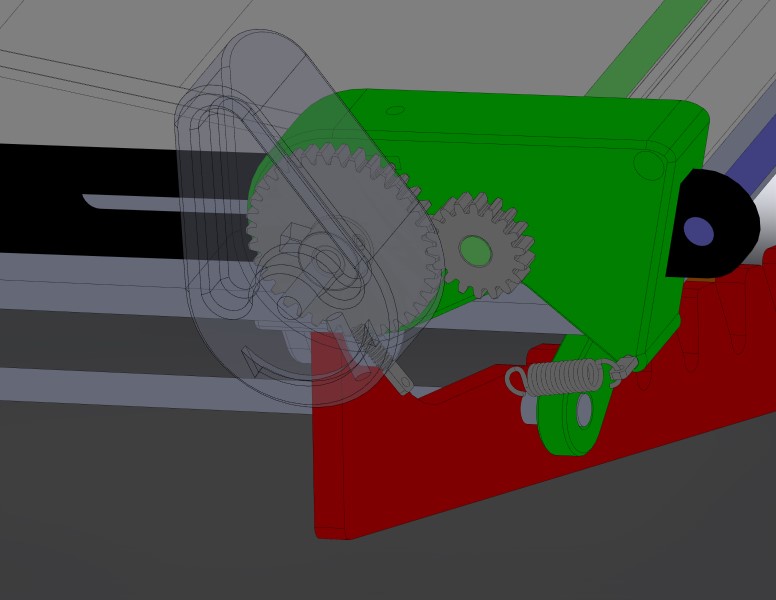Projects
Selected projects with iterative prototyping experiences for reference
Prosthetic Mouse for Hosmer 5X terminal device user
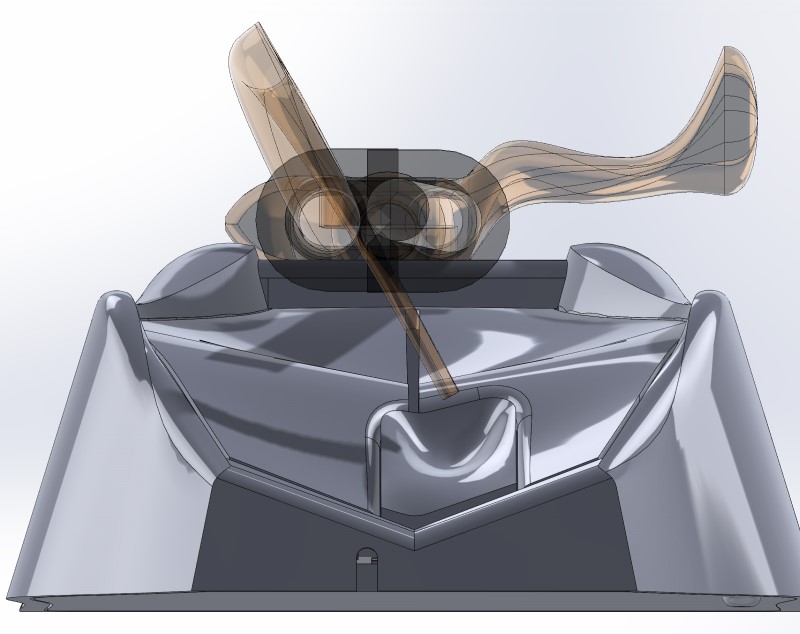 The Hosmer 5X is still one of the most common terminal devices for amputees because it provides flexibility and grip strength not afforded by other more natural looking prostheses.
The Hosmer 5X is still one of the most common terminal devices for amputees because it provides flexibility and grip strength not afforded by other more natural looking prostheses.
Dr. Rory Cooper, director, Human Engineering Research Laboratories, had the idea to facilitate using a computer mouse while using the most common Hosmer "hook". The initial brief was to create a mouse with a joystick-like protrusion on the top to give the user a method of grasping the mouse for lateral movement. Prototypes 1-3 utilized this functional model but this proved difficult to grasp and release. Prototype 4+ utilized a saddle that supported the weight of the limb and the terminal device and used friction to provide enough grip to move the mouse laterally.
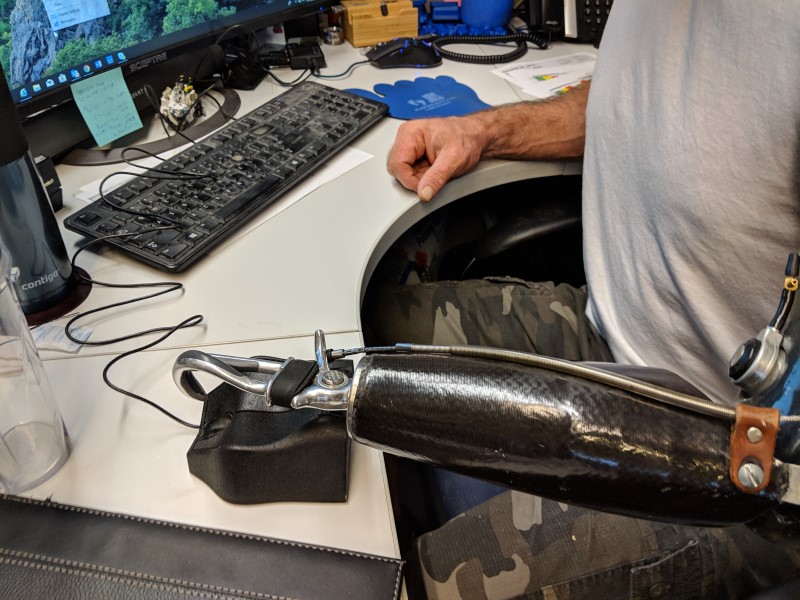 I was fortunate to work on the CAD modeling and physical production of the first 5 prototype versions of this idea and learned a great deal about the Hosmer device and the interface that controls its grip motions. Working with the school of Prosthetics and Orthotics at University of Pittsburgh and some very gracious volunteer patients who agreed to give us feedback on designs we were able to create a prototype that made it easier to use a computer mouse with a Hosmer terminal device.
I was fortunate to work on the CAD modeling and physical production of the first 5 prototype versions of this idea and learned a great deal about the Hosmer device and the interface that controls its grip motions. Working with the school of Prosthetics and Orthotics at University of Pittsburgh and some very gracious volunteer patients who agreed to give us feedback on designs we were able to create a prototype that made it easier to use a computer mouse with a Hosmer terminal device.
Concept: Dr. Rory Cooper, Director, Human Engineering Research Laboratories (HERL)
Design: Aaron Anderson with guidance from Dr. Garret Grindle (HERL), and Zachary Anzelone (University of Pittsburgh office of Prosthetics and Orthotics)
Prototype produced: Aaron Anderson with guidance from Benjamin Gebrosky (VA)
User testing: University of Pittsburgh Department of Prosthetics and Orthotics volunteer
Invention Disclosure Filed 2019 - Dr. Rory Cooper, Dr. Garrett Grindle, Aaron Anderson, Zachary Anzelone
Patent Application No: 16/801,263 Computer Pointing Device
VA ID 2018-348
Pitt 04741
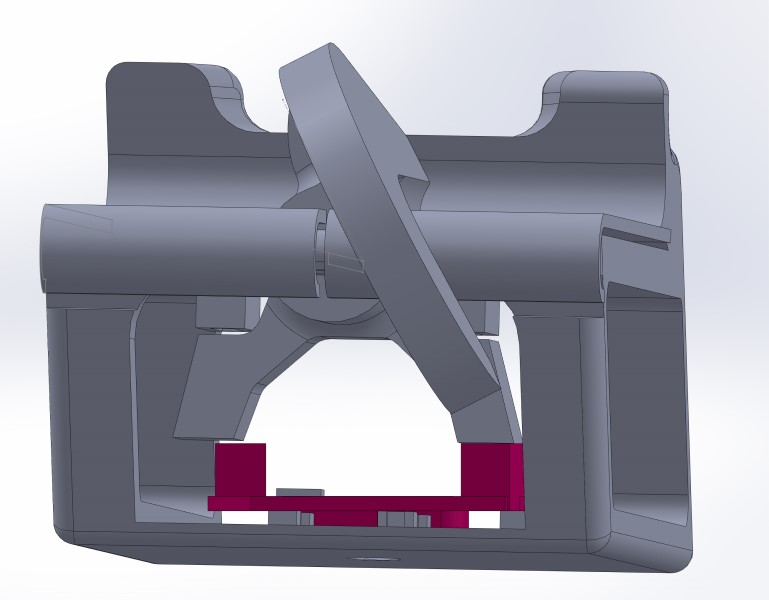


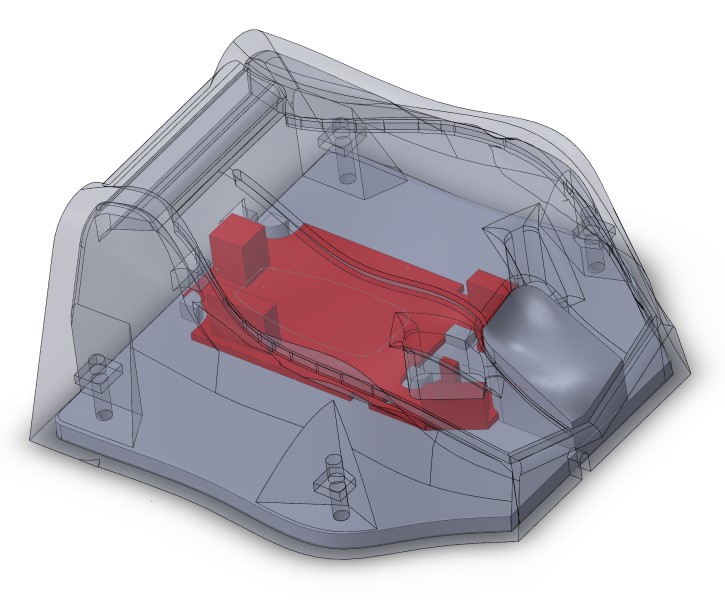



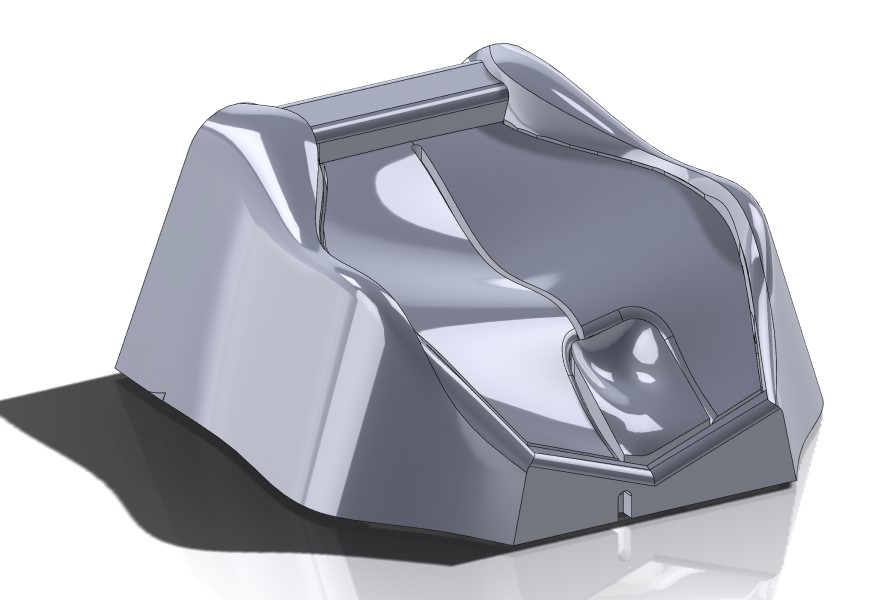
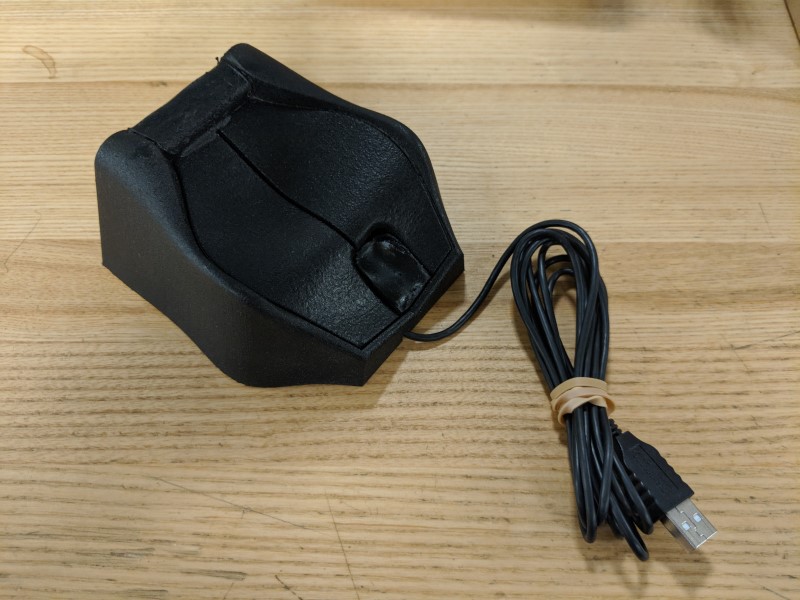
Adaptive Table Tennis Wheelchair Prototype
 Table tennis requires the player to be agile and able to move in a range within a small space at either end of the playing surface. Doing this in a wheelchair is problematic because if you're holding the paddle in one hand you can't use both hands on your wheels to maneuver.
Table tennis requires the player to be agile and able to move in a range within a small space at either end of the playing surface. Doing this in a wheelchair is problematic because if you're holding the paddle in one hand you can't use both hands on your wheels to maneuver.
Our team created and built a prototype caster that locks into one axis when desirable and can then be returned to 360 degree rotation when playing is complete. This prototype was created using an SLS build caster housing that limits motion when engaged, and uses magnets to hold the rotational lock out of the way when not in use.
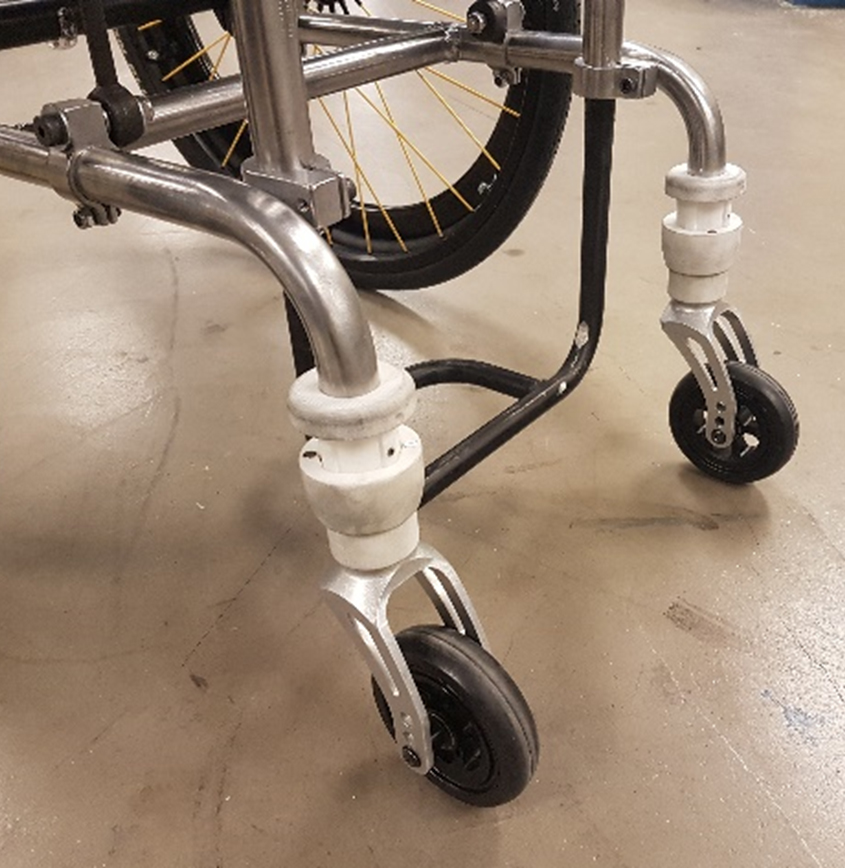 The prototype also includes adjustable height and anterior/posterior tilt modifications that can be made quickly and with common tools.
The prototype also includes adjustable height and anterior/posterior tilt modifications that can be made quickly and with common tools.
User testing of this prototype is still ongoing, but initial feedback has been good when it was used at the Paralysed Veterans Games in 2019
Concept: Dr. Rory Cooper, Director, Human Engineering Research Laboratories (HERL), Dr. Johnathan Duval, Aaron Anderson, Siew Seang Ong, Jeffrey Ruffing, Robert McDonough
Design: Aaron Anderson, Siew Seang Ong, Jeffrey Ruffing, Robert McDonough, Dr. Johnathan Duval
Prototype produced: Aaron Anderson, Siew Seang Ong, Jeffrey Ruffing, Robert McDonough, Benjamin Gebrosky (VA)
User testing: Aaron Anderson, Siew Seang Ong, Dr. Rory Cooper
Invention Disclosure Filed 2019 - Dr. Rory Cooper, Dr. Johnathan Duval, Aaron Anderson, Siew Seang Ong, Jeffrey Ruffing, Robert McDonogh


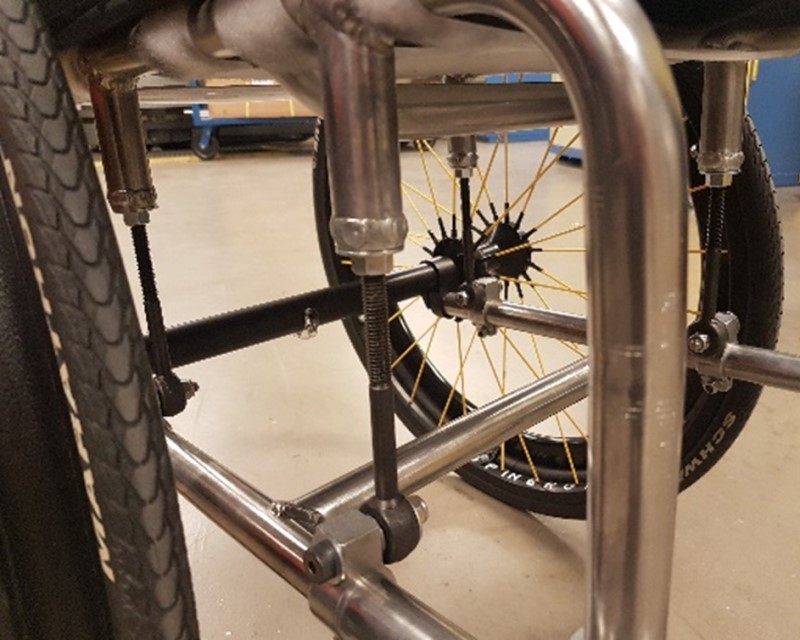

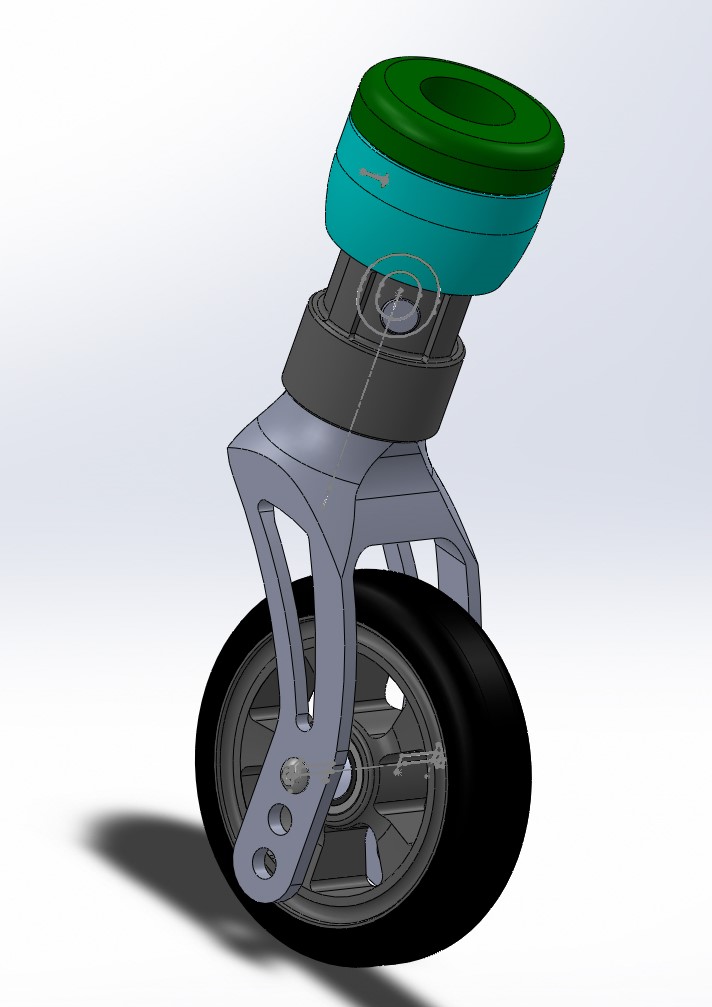
Wheelchair Wellness App
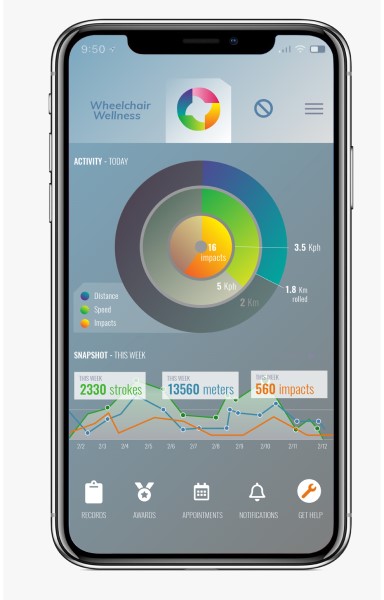 Initial tutorial screens designed to onboard new users and incentivize activity and establish a baseline of activity level. Metrics report to show chair user their activity level and enable them to have an accurate gauge of performance daily, weekly, monthly and establish yearly goals for improvement.Daily-use screens include a data-driven home screen that reflects a number of different activity measures over time. Pop-up messages appear when sensors need to be
calibrated or if maintenance is suggested for components that are reaching end of life.
Initial tutorial screens designed to onboard new users and incentivize activity and establish a baseline of activity level. Metrics report to show chair user their activity level and enable them to have an accurate gauge of performance daily, weekly, monthly and establish yearly goals for improvement.Daily-use screens include a data-driven home screen that reflects a number of different activity measures over time. Pop-up messages appear when sensors need to be
calibrated or if maintenance is suggested for components that are reaching end of life.
A user profile could be useful in an online community of peers with whom competitiveness would be an encouragement for future activity improvement.
Need Addressed: Creating an app to assist wheelchair users in maintaining and servicing their wheelchairs by interfacing directly with service providers to more accurately predict the lifespan of components based on use.
Concept: Dr. Anand Mhatre, University of Pittsburgh, School of Health and Rehabilitation Science, Jacob Meadows
Frond-end Design: Aaron Anderson, Jacob Meadows



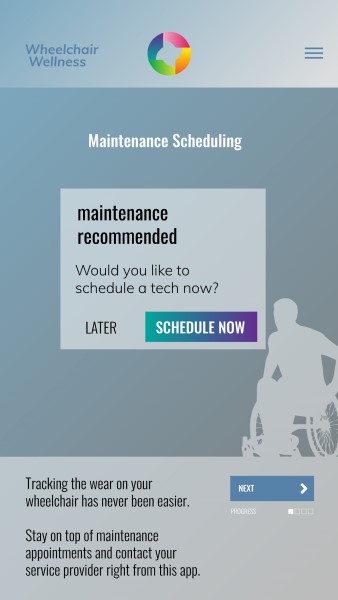

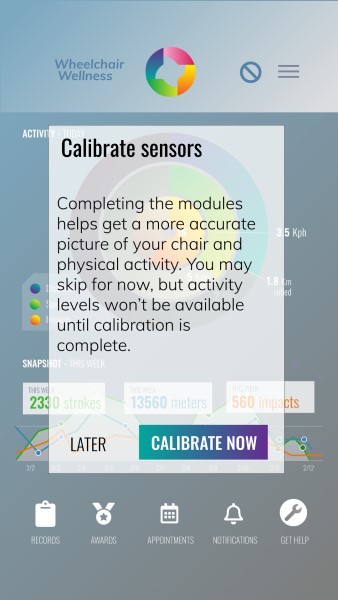


Page-Turning Book Reader
 This team project began with observation of participants at Community Living and Support Services (CLASS) where needs were evaluated and prioritized. Our team fabricated an assistive reading device to assist persons with limited hand dexterity read more independently. An adjustable book holding device that turns pages on a book with the application of force on a lever. I was the CAD lead and worked in SolidWorks to produce the design concepts and assisted in production of the physical protype using various additive and traditional manufacturing technologies.
This team project began with observation of participants at Community Living and Support Services (CLASS) where needs were evaluated and prioritized. Our team fabricated an assistive reading device to assist persons with limited hand dexterity read more independently. An adjustable book holding device that turns pages on a book with the application of force on a lever. I was the CAD lead and worked in SolidWorks to produce the design concepts and assisted in production of the physical protype using various additive and traditional manufacturing technologies.
Concept: Satria Ardansari, Adam Duca Aaron Anderson, Jenna Friedman
Design: Aaron Anderson, Jenna Friedman, Satria Ardansari, Adam Duca
Prototype produced: Aaron Anderson, Jenna Friedman, Satria Ardansari, Adam Duca
User testing: Volunteer participant at Community Living and Support Services
